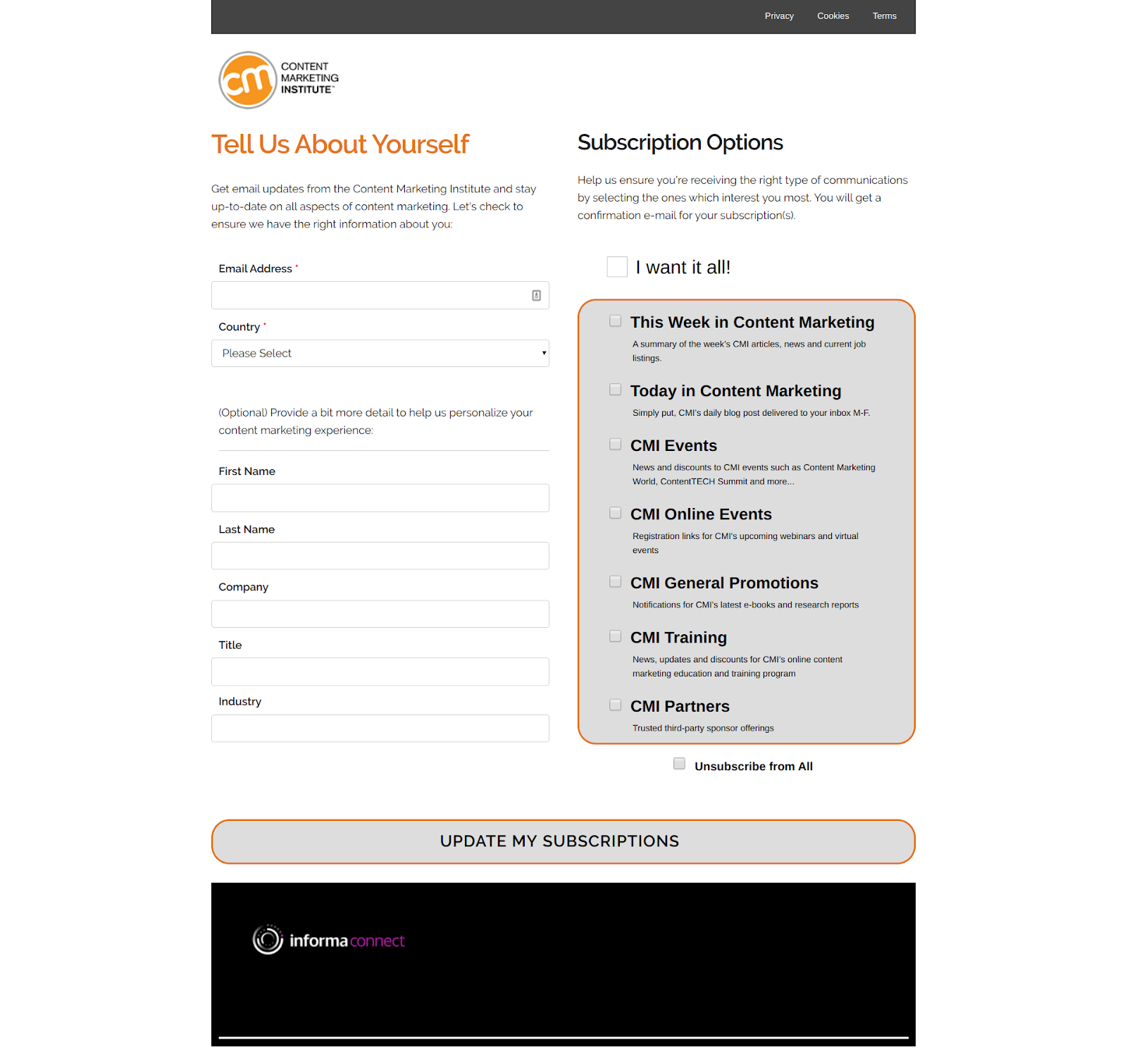Email personalization is the key to improving your conversion rates, and personalized promotional emails are 41% higher in unique click rates compared to non-personalized emails.
Generic emails aren’t very useful, especially compared to sending content that appeals to a person’s unique interests.
Today we’ll be discussing how email segmentation can help you create more personalized emails. Audiences who receive emails that are tailored to their unique needs will lead to more emails opened and a higher conversion rate.
What is email segmentation?
Email segmentation is a marketing strategy that divides up your email subscribers into separate groups. These groups are made based on numerous factors, including demographics, engagement, and more. (Later in this article, we’ll discuss additional factors and how to use them).
Segmenting your email list allows marketers to provide a more personal experience.
For example, you may host a live webinar at 11am in New York, but none of your Australian audiences would be interested in attending a webinar at 1am their time. A segmented email list means you only send your American audience a notification about the timezone-friendly webinar. Segmenting your audience based on geography leads to a better chance of a higher conversion rate.
Does email segmentation boost conversions?
Email segmentation can indeed help boost your conversion rates. Marketers have found a 760% increase in revenue with targeted email campaigns. Even a personalized subject line can lead to a 26% increase in your open rates.
But why does it work?
People don’t like being part of a crowd. They want to feel unique and have their interests recognized. A personalized email campaign can send the right message to the right person at the right time.
One tip when getting started is to ask for a subscriber’s birth date when they sign-up. Then on their birthday, you can send them a coupon or free product/service as a birthday present (this could be a free consultation, free trial, etc.). It’s a simple strategy to make your subscribers feel appreciated and rewarded.
Email segmentation strategies
What are some other ways to segment your subscribers? Let’s break down some popular email segmentation strategies.
Website behavior
Monitoring a subscriber’s actions on your website can also help personalize your emails. You may notice a trend where they spend a lot of time on a specific product page. In this case, you can send them emails promoting that product or offer a discount code.
Website behavior can also help you learn more about where a subscriber is on a buyer’s journey and adjust your personalized emails to match.
Personal interests
Segmenting by personal interests may be most beneficial to businesses with multiple content topics. Email subscribers can personalize the content they want to have sent to them.
You can determine personal interests by asking subscribers to mark their content interests on your sign-up form, especially if your site covers a variety of topics. You could also send them an email with a survey asking them to self-segment and choose interests that they may want to know more about. Here are just a few examples:
Melyssa Griffin

Instead of waiting to get a subscriber’s email address and sending an email asking them to mark their interest, Melyssa Griffin chooses to ask them right away. Her opt-in form is the main banner of her website and asks potential subscribers what their biggest challenge is in their business.
By segmenting right from the get go, her email list can get personalized emails that help them overcome their biggest challenge. Her subscribers are left feeling that she cares about helping them with value-based emails.

Content Marketing Institute asks its subscribers to segment themselves upon sign-up. They asked for a variety of information, including name, country, job title, and the type of content the subscriber wants.
Typically, asking for so much information could be a turn-off, but the Content Marketing Institute only makes two of the questions required. The rest are optional. This way, subscribers have a choice on how much they share.
Geographic
Something as simple as asking for a zip code or state on your opt-in form can help personalize your emails. As we mentioned earlier, it can help you send timezone-sensitive events to the right geographic location.
It can also help you adjust the time that emails send to maximize the chances a subscriber will read it. For example, maybe you notice that your email open rates are higher if you send an email at 8am. You can schedule the same email to send at 8am on the East coast, and then again 3 hours later for the West coast.
Abandoned Shopping Carts
If you’re in eCommerce, then you know that many people fill-up their shopping carts and don’t purchase any product.
Sending an email when a shopping cart is abandoned could help remind them of what they want. Even if the person doesn’t buy, you could add them to a separate segmentation of potential buyers that may need extra persuasion.
Final Words
Even if you currently have a small email list, segmenting that list now can help you grow. If you haven't segmented your list from the beginning, you can start now by sending out a quick survey to your audience.
Email segmentation can also help brands send more relevant and timely messages to subscribers. Personalized emails encourage higher open-rates and ROI, so it’s a no-brainer for businesses to incorporate it into their email marketing strategy.
Take some time to segment your email list, and you’ll most likely see increased engagement. Let us know in the comments what your results are!
